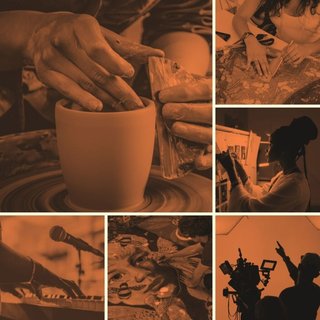Creative Digital Campaigns for the Arts

In the current digital era, the arts have found new avenues for expression and audience engagement through innovative digital campaigns. These campaigns leverage the effectiveness of technology to improve accessibility, foster community, and promote creative endeavors. Here’s a peek at some effective strategies and galvanizing examples of creative digital campaigns in the arts.

1. Virtual Reality (VR) and Augmented Reality (AR) Experiences
Example: The Van Gogh Museum’s VR Experience
The Van Gogh Museum in Amsterdam launched a VR experience that allows users to step inside Van Gogh’s paintings. This immersive experience not merely brings the skill to life but additionally provides contextual information about the artist's life and methods. Such VR experiences can modify the way audiences connect to and understand art, making it more engaging and accessible.
2. Social media marketing Campaigns
Example: #GettyMuseumChallenge
Through the COVID-19 lockdown, the Getty Museum in L . a . launched the #GettyMuseumChallenge, encouraging people to recreate famous artworks using things around the house. This campaign went viral, with thousands of participants worldwide. It demonstrated how social media marketing can be used to foster creativity and connect people with art in the fun and interactive way.
3. Interactive Websites and Digital Exhibitions
Example: The Louvre’s Online Collections
The Louvre Museum in Paris provides an extensive online collection, allowing visitors to explore 1000s of artworks starting from their homes. Interactive websites and digital exhibitions can offer detailed information, high-resolution images, and virtual tours, making art readily available to a global audience.
4. Crowdsourcing and Collaborative Projects
Example: Tate Modern’s “Tate Collective”
Tate Modern’s “Tate Collective” is really a digital platform that invites teenagers to collaborate on creative projects, share their job, and get access to exclusive events. By concerning the audience in the creation process, such initiatives create a sense of community and ownership, encouraging deeper engagement with all the arts.
5. Digital Storytelling and Multimedia Content
Example: The Metropolitan Museum of Art’s “Met Stories”
The Metropolitan Museum of Art’s “Met Stories” series uses videos, podcasts, and articles to share with you personal stories linked to the museum’s collection. By combining various forms of media, digital storytelling can create a rich, immersive experience that resonates with audiences on a personal level.
6. Influencer Collaborations
Example: National Gallery’s Partnership with YouTubers
The country's Gallery in London has partnered with popular YouTubers and social media marketing influencers to reach younger audiences. These collaborations bring a new perspective to traditional art and help introduce it with a broader, more diverse audience.
7. Online Workshops and Live Streams
Example: MoMA’s Virtual Art Classes
The Museum of contemporary Art (MoMA) offers virtual art classes and live-streamed events, enabling people to learn from experts and engage with art in real-time. Online workshops and live streams provide interactive and educational experiences that may be accessed everywhere you look in the world.
Digital marketing for Arts and Culture for your arts are transforming the way people build relationships culture and creativity. By leveraging technology, arts organizations can reach wider audiences, foster community, and promote a deeper understanding and appreciation of the arts. As digital platforms continue to evolve, the possibilities for innovative and interesting campaigns are boundless, promising a fantastic future for the arts in the digital age.
